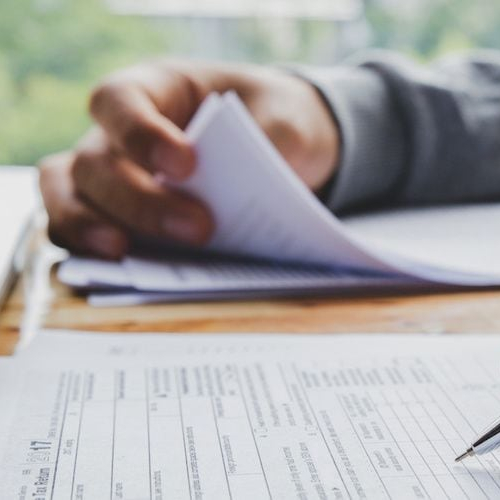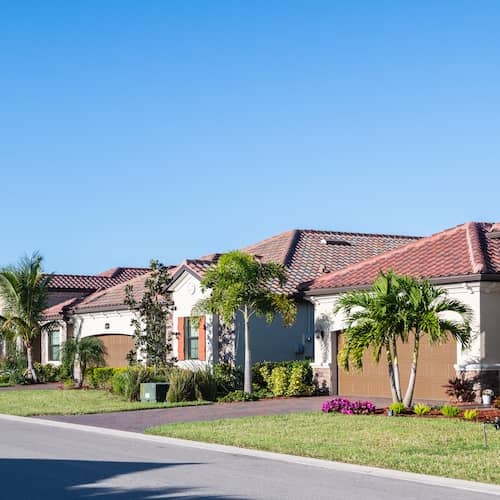How to determine your mortgage payment on a $250K loan
Feb 25, 2024
•9-minute read

If you’re thinking about taking out a mortgage to finance a home purchase, the first item you’ll need to consider is the amount you can afford to make on your monthly mortgage payments. Several factors can influence your monthly payment amount, including the total loan amount, interest rate, loan term and other home buying fees.
Maybe you’ve crunched the numbers and decided a $250,000 mortgage is in the ballpark of what you can comfortably afford. But what does your mortgage payment look like with a $250K loan?
Below, we’ll uncover the factors that affect your monthly mortgage payments, plus outline your principal and interest payments on a 30-year fixed-rate $250K mortgage. That way, you’ll understand all of the costs involved with paying off your $250,000 home loan.
How much is the monthly payment on a $250,000 mortgage?
The average monthly mortgage payment on a $250K loan with a 30-year fixed term and an interest rate of 7% is about $1,663. Keep in mind that this monthly payment doesn’t include additional mortgage fees such as property taxes and homeowners insurance. It also doesn’t factor in your down payment, closing costs and other home buying costs. We’ll discuss these components later on in the article.
To get a clearer picture of what your monthly payment could look like on a $250K loan, use the Rocket Mortgage® mortgage calculator.
What factors affect your $250K mortgage payment?
When considering the total costs involved in taking out a loan to buy a house, the acronym PITI can be helpful. This stands for principal, interest, taxes and insurance. Many mortgage lenders calculate your PITI when deciding whether you qualify for a mortgage of a particular amount.
All of the PITI components affect the size of your monthly mortgage payment, so let’s delve into the specifics of each.
Principal balance
Before we discuss your interest rate, it’s important to have a general understanding of your principal loan balance. The principal balance on a mortgage is the amount you borrow from a lender. If you’re taking out a $250,000 home loan, for example, that’s the principal balance. If you make a 20%, or $50,000, down payment on a $250K house, your principal balance would be $200,000 because that’s the size of the loan you would need after making your down payment.
Your principal payment is a portion of your monthly mortgage payment, which also includes interest, as well as homeowners insurance and property taxes in most cases.
Interest rate
Now, let’s consider how the loan’s interest rate affects your monthly payment. Interest on a mortgage is the amount you pay to borrow money from a lender. Interest rates are determined by a combination of market trends and personal factors, including your credit score, debt-to-income ratio (DTI), income and down payment amount. Just like principal, interest makes up a portion of your monthly mortgage payment.
The higher your mortgage rate, the higher your monthly payment will be. For example, the monthly payment on a 30-year fixed $250K mortgage with an interest rate of 6% is about $1,499 (excluding insurance and property taxes). For the same mortgage with an 8% interest rate, the monthly payment is about $1,834 (excluding insurance and property taxes).
Fixed-rate vs. adjustable-rate mortgage loans
Whether your mortgage has a fixed or adjustable interest rate can also influence your monthly mortgage payments on a $250K loan. With a fixed-rate mortgage, you have the same interest rate throughout the life of the loan. This means you’ll typically make the same mortgage payment every month, although fluctuations in homeowners insurance and property taxes can alter the payment amount.
With an adjustable-rate mortgage (ARM), the interest rate is fixed for a period of time (typically 7 or 10 years). Once this initial period expires, your interest rate can increase, decrease or stay the same.
Term length
Your loan term determines how long you’ll be making principal and interest payments on the home loan unless you pay the loan back ahead of schedule. The most common loan terms are 15- and 30-year mortgages, although other term lengths may be available to you.
The longer your term, the more time you have to pay back the loan and the smaller your monthly payments will be. The bad news is you’ll end up paying more in interest over the life of the loan.
With a shorter loan term, you’ll pay less in interest over time but put more money toward your loan’s principal balance every month, resulting in your monthly mortgage payment being higher than if you opted for a longer loan term.
$250K mortgage term length example
Let’s consider how the term length on a $250K loan affects the amount of your monthly payment and the total interest paid on the mortgage. If you secure a 7% fixed interest rate and a 30-year loan term, you’ll pay about $348,772 in interest when all is said and done. Your monthly mortgage payment would amount to $1,663 (without insurance and property taxes).
If you take out the same loan amount with the same interest rate but opt for a 15-year loan term, you’ll end up paying $154,473 in total interest – significantly less than half of what you’d pay with a 30-year loan. However, your mortgage payment would be around $2,247 a month, excluding property taxes and insurance.
Additional home buying costs
In addition to the mortgage rate and term length, other costs can shape the amount of your monthly payment on a $250K loan. Some of these costs include the ones discussed next.
Closing costs
You can expect your closing costs to be 3% to 6% of your loan amount. For a $250,000 mortgage, this means you’ll pay $7,500 to $15,000 in closing costs. If you’d rather not pay these costs at the closing table, a lender may be willing to roll them into your monthly mortgage payments – increasing the size of each payment.
Homeowners insurance
You can either pay the homeowners insurance premium in a lump sum directly to your insurance provider each year, or the cost can be divided by 12 (for the 12 months in a year) and added to your monthly mortgage payments. If you choose the second and more common option, your lender will set this money aside in an escrow account and pay the insurance company at the end of every year on your behalf.
Property taxes
You’ll pay property taxes based on local property tax rates and your home’s value. Your lender will typically divide your annual tax bill by 12, add the divided amount to your monthly mortgage payments and pay your local government on your behalf through an escrow account – just like with homeowners insurance.
Private mortgage insurance (PMI)
If you took out a conventional $250K mortgage after making less than a 20% down payment on the purchase price, you’ll have to pay private mortgage insurance (PMI). Annual PMI typically costs 0.2% – 2% of your remaining loan balance. So, on a $250,000 mortgage, you’ll likely pay $500 – $5,000 in PMI the first year and pay less in subsequent years as your remaining loan balance drops. This cost can usually be rolled into your monthly mortgage payments.
Example monthly payments on a $250K loan
Let’s take a look at how different interest rates and term lengths can influence your monthly payment on a $250,000 mortgage. Keep in mind that these payments don’t account for property taxes and homeowners or mortgage insurance.
| Annual percentage rate (APR) | Monthly mortgage payment (10-year term) | Monthly mortgage payment (15-year term) | Monthly mortgage payment (20-year term) | Monthly mortgage payment (30-year term) |
|---|---|---|---|---|
|
6% interest rate |
$2,776 |
$2,110 |
$1,791 |
$1,499 |
|
7% interest rate |
$2,903 |
$2,247 |
$1,938 |
$1,663 |
|
8% interest rate |
$3,033 |
$2,389 |
$2,091 |
$1,834 |
Amortization schedule on a 30-year fixed-rate $250K mortgage
A mortgage amortization schedule shows how long it’ll take to pay off your home loan by making regular monthly payments. It also breaks down how much you pay in principal and interest throughout the life of the loan.
Next, we’ve included a sample amortization schedule on a $250,000 mortgage with a 30-year term and a fixed 7% interest rate. The calculations only account for principal and interest on the loan. Excluded are costs such as homeowners insurance and property taxes because they can vary based on your location and the home’s value.
| Year | Annual interest paid | Annual principal paid | Remaining loan balance |
|---|---|---|---|
|
1 |
$17,419.55 |
$2,539.52 |
$247,460.48 |
|
2 |
$17,235.97 |
$2,723.11 |
$244,737.37 |
|
3 |
$17,039.11 |
$2,919.96 |
$241,817.41 |
|
4 |
$16,828.03 |
$3,131.04 |
$238,686.36 |
|
5 |
$16,601.69 |
$3,357.39 |
$235,328.97 |
|
6 |
$16,358.98 |
$3,600.09 |
$231,728.88 |
|
7 |
$16,098.73 |
$3,860.35 |
$227,868.54 |
|
8 |
$15,819.66 |
$4,139.41 |
$223,729.13 |
|
9 |
$15,520.43 |
$4,438.65 |
$219,290.48 |
|
10 |
$15,199.56 |
$4,759.52 |
$214,530.96 |
|
11 |
$14,855.49 |
$5,103.58 |
$209,427.37 |
|
12 |
$14,486.55 |
$5,472.52 |
$203,954.85 |
|
13 |
$14,090.94 |
$5,868.13 |
$198,086.72 |
|
14 |
$13,666.73 |
$6,292.34 |
$191,794.38 |
|
15 |
$13,211.86 |
$6,747.21 |
$185,047.17 |
|
16 |
$12,724.10 |
$7,234.97 |
$177,812.20 |
|
17 |
$12,201.09 |
$7,757.99 |
$170,054.21 |
|
18 |
$11,640.26 |
$8,318.81 |
$161,735.40 |
|
19 |
$11,038.89 |
$8,920.18 |
$152,815.22 |
|
20 |
$10,394.05 |
$9,565.02 |
$143,250.20 |
|
21 |
$9,702.60 |
$10,256.48 |
$132,993.72 |
|
22 |
$8,961.16 |
$10,997.92 |
$121,995.80 |
|
23 |
$8,166.12 |
$11,792.96 |
$110,202.84 |
|
24 |
$7,313.60 |
$12,645.47 |
$97,557.37 |
|
25 |
$6,399.46 |
$13,559.61 |
$83,997.76 |
|
26 |
$5,419.23 |
$14,539.84 |
$69,457.92 |
|
27 |
$4,368.15 |
$15,590.93 |
$53,866.99 |
|
28 |
$3,241.08 |
$16,718.00 |
$37,148.99 |
|
29 |
$2,032.53 |
$17,926.54 |
$19,222.45 |
|
30 |
$736.62 |
$19,222.45 |
$0.00 |
Based on this 30-year payment schedule, you’ll end up paying a total of $598,772.25, with $348,772.25 of this amount going to interest payments.
If you’re considering other interest rates and term lengths for a $250K mortgage loan, use our amortization calculator to see your options.
How to apply for a $250,000 home loan
Understanding what your monthly payment could look like with a $250,000 mortgage is paramount as you prepare to buy a house. However, other steps involved in the process are worth considering before you submit your mortgage application.
Take a look at these 10 steps for securing a $250K mortgage.
- Step 1: Determine your housing budget. Estimate the amount you can comfortably afford upfront and long-term, on the mortgage loan as well as other housing costs.
- Step 2: Assess your qualifying factors. This may include reviewing your credit report, credit score and DTI. You’ll also want to gather any documentation you’ll need to verify your identity, income and assets.
- Step 3: Get mortgage preapproval. Also called initial mortgage approval, mortgage preapproval helps you understand how much you can afford to spend on the purchase of a house. Some preapproval letters may also indicate how much you can borrow and your likely interest rate.
- Step 4: Compare lenders and mortgage rates. Shop around and get quotes from different mortgage lenders to uncover your best option.
- Step 5: Find a house and make an offer. If you’re working with a real estate agent, they can help you determine how much to offer on a house if you want to ensure that your offer is competitive. You’ll also want to consider whether to include contingencies or make an earnest money deposit.
- Step 6: Choose a mortgage lender. Once a seller accepts your home offer, you’ll need to settle on the right mortgage lender for your situation, if you haven’t already. In any case, you’ll want to be preapproved by at least one lender before making an offer.
- Step 7: Fill out and submit your loan application. Complete your mortgage application and provide any necessary documents, including bank statements, W-2s and tax returns. You’ll receive a Loan Estimate – which outlines your loan terms and conditions – a few days after submitting your application.
- Step 8: Go through the underwriting process. Underwriting is the process by which your lender reviews your finances in-depth and verifies all of your information. You’ll receive final mortgage approval once underwriting is complete.
- Step 9: Get ready for closing. Prepare to close on your mortgage by getting your down payment and money for closing costs in order. You’ll also need to provide your lender with proof of your new homeowners insurance.
- Step 10: Close on your new house. Once your closing documents are signed, the home sale is finalized. You’ll get the keys to your new house, move in and start making your mortgage payments – and, hopefully, lots of good memories.
$250K mortgage loan FAQs
Are you trying to decide whether a $250,000 mortgage is right for you? We’ve answered a few frequently asked questions on this topic.
How much per month is a $250K mortgage?
The amount you’ll pay every month toward a $250,000 loan depends on several factors, including your term length, interest rate, property taxes and homeowners insurance. Your monthly payment amount can also vary based on whether certain costs (such as closing costs and PMI) were rolled into your mortgage.
If considering only your loan term and interest rate, the monthly payment on a 30-year fixed-rate $250k loan with a 7.5% interest rate would be about $1,748.
What is my total interest paid on a mortgage of $250,000?
Let’s consider the example discussed above. If you make the $1,748 monthly payment (excluding insurance and property taxes) on time every month throughout the 30-year loan term, you’d pay $379,293 in total interest.
How much do I need to make to get a loan for $250K?
To determine how much of your income should go toward your mortgage, you might want to follow the 28% rule. This rule asserts that no more than 28% of your gross monthly income should go toward housing expenses. So, if your monthly mortgage payment is $1,748, you’d divide this number by 28% to determine how much you should make every month: $1,748 ? 0.28 = $6,242.85.
To calculate the amount you’d need to make every year, multiple $6,242.85 by 12 months. You’d need to bring in about $75,000 a year to get a $250,000 home loan, according to the 28% rule and the loan terms outlined above.
The bottom line: Calculate whether a $250K loan is feasible for you
Before you begin house hunting, it’s best to figure out whether a $250,000 mortgage is a good option for your home buying needs. Determine how much you can comfortably put toward your monthly mortgage payments, then review different term lengths, interest rates and mortgage types.
Don’t forget to factor other housing expenses – such as property taxes, homeowners insurance and, potentially, mortgage insurance – into your calculations.
Are you ready to take the next step in the home buying process? Apply for a mortgage to find out what you qualify for today.

Ashley Kilroy
Ashley Kilroy is an experienced financial writer. In addition to being a contributing writer at Rocket Homes, she writes for solo entrepreneurs as well as for Fortune 500 companies. Ashley is a finance graduate of the University of Cincinnati. When she isn’t helping people understand their finances, you may find Ashley cage diving with great whites or on safari in South Africa.
Related resources

8-minute read
Mortgage interest deduction: A guide for the 2025 tax year
Learn how the 2025 mortgage interest deduction works, what qualifies, and whether itemizing or the standard deduction saves you more.
Read more

6-minute read
What is the average mortgage payment in Florida?
Wondering about Florida’s average mortgage payment? Explore the state’s trends, interest rates, and what to expect when buying a home in the Sunshin...
Read more

4-minute read
Understanding types of assets
What are assets? Find out the different types of assets to help manage your finances, build wealth, and make smart financial decisions.
Read more